BRUCE PERLOWIN - TIME LINE
My story is somewhat very simple. I'm still am a product of the 60's, want to help change the world and believe that the world can and will be changed into a much better place - in fact a heaven on earth one day.
I always wanted to be a different person than the stereotypical individual living in traditional society when I grew up. My family and friends thought that was something that wasn't such a bad idea. As it turns out, they were right and so was I.
My life is not your typical one in many respects and in fact quite an unusual one. This keeps me from getting bored with myself and I enjoy the excitement and interesting adventures life has shown me and taken me through.
I have many heroes’ however I think each individual living today is in their own way an unsung hero and each persons story has information, knowledge and wisdom within them that we can all learn from.
The two people from my past who I'd most like to see again is Carol Lane and Robin Lane, because I at one time loved each one of them dearly as childhood friends since elementary school and throughout junior and senior high school and after, and today they are still in my heart and I simply want to know that they are Ok and happy, and I'd like to know how their lives turned out.
If I won $100 million, I'd give half of it to my wife to be, and then spend the rest on helping to change the world, feeding starving children or creating an environment to make sure there were no starving children anywhere and other social causes as well as creating communities made up of Kin’s Domains as discussed in the series of books called “The Ringing Cedars of Russia” by Vladimir Megre (which sold over 10 million copies in Russia alone, and has been translated into 20 languages) and is an actual template for that global change we never finished from the 60’s.
In 10 years, I hope to be in perfect health and great physical condition, living on my Kin’s Domain and helping create other Kin’s Domains. I'm going to get there by retiring from working and focus on getting back in shape and getting as healthy as modern alternative health and nutrition can make me.
My oldest friend is David Tobias who I met somewhere around third grade. Today just being around him and hearing his voice is very comfortable as it's a voice I’ve known my whole life. David is my best friend from growing up and Don Steinberg is my best friend as someone I met later in life. Don and I have been partners in three companies – all of which were wildly successful, cutting edge and pioneers in various products and services from prepaid phone cards to international CallBack to prepaid debit cards.
One childhood memory I'll never forget was when over a dozen of us from high school skipped school and went to Fairchild's Gardens and all took LSD (sorry, that was an in thing to do for the hippies of the 60's). Anyway, at the Gardens I could look around and see individual friends, couples sitting alone, a group of friends sitting together talking and no one but us was in the park. Every one of the people, couples or groups of people were ones I had great fondness for, from liking them a lot to different levels and kinds of love towards them. It was for a moment like living in the Garden of Eden with loved ones and family.

February 17, 1951
I was born in Philadelphia which historically it was in this city that some of the ideas, and subsequent actions, gave birth to the American Revolution and American Independence, making Philadelphia a centerpiece of early American history. Born five and a half years after the end or World War II, I was one of the 76 million post war "Baby Boomers" which later made up the "Hippie Generation".
I am an Aquarian which is interesting since Aquarian is the water bearer and today Energy Wellness Water is one of the companies I own and I market healthy water and healthy energy drinks. The Age of Aquarius is still something I envision as a reality one day and my optimistic ideals are still intact and still working towards making a better world. A few years after I was born my family moved to Miami and I ended up living right down the block from where first Norland Elementary School was built and later Norland Junior High and Norland Senior High was built. So I went to Norland from 1st through 12th grade.
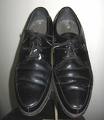
1958
At age 7 I started my first business which was going door to door shining shoes. I charged 10 cents to shine a pair of shoes - which I'd take home - shine them and bring them back to my customer. In a brilliant marketing move my father told me I should also offer a special of three pair of shoes for twenty five cents. I thought this was the coolest concept I've ever heard of, and with that special I marched up and down the streets of my neighborhood promoting my shoe shinning business - ten cents a pair or three for a quarter.
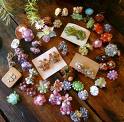
1959
At age 8 I started my second business. After shinning everyone's shoes in the neighborhood that wanted that service I sort of ran out of customers. One day my next door neighbor threw away a bunch of costume earrings in the trash outside. In those days we would make trash piles of things that didn't go in the garbage cans and pile them outside on the curb for collections. This was a great source of treasure hunting for myself and my two brothers Gary and Craig. Anyway, I collected all the earrings, tacked them onto cardboard in a nice display and went door to door selling them. Ten cents each, or three for a quarter.
I remember to this day what happened when I went to one home where a little girl my age lived. I knocked on the door and she answered and I did my pitch and she screamed very loudly, "Oh my God - Linda, Linda come here, come here quickly" calling to her older sister. I was frozen in terror - what had I done? Did I scare her? Did she think I was going to hurt her or rob their house? Why was she calling out to her older sister for help? I was really confused and concerned at that moment. When Linda the older sister came to the door and said what is it? The little girl exclaimed in a loud excited voice - "Look how beautiful these earrings are, we have to buy them all - and their only 25 cents for three of them". Relieved and full of joy, I began to breathe again as I went from panic to elation that I not only had a big sale coming up, but I also made this little girl very happy and excited as was her older sister when she saw the earrings. They bought almost all the earrings and I was hooked on selling. That was the moment that marketing and being a marketer sunk into the very fabric of my being as a fun, rewarding and joyful thing to do.

1958 - 1963
Years I went to Norland Elementary School. I remember Mrs. Reed was my first grade teacher, Miss Whatley was my third grade teacher, Mr. Roberts my fourth grade teacher and Mr. Howard was my sixth grade teacher. During the summer after 3rd grade (1960) I moved from 19165 NW 10th Court to 20040 NW 13th Court (its amazing how one can remember their first addresses and/or phone numbers - now 50 years later).
For some reason I have very fond memories of Mr. Howard's 6th grade class. It was a lot of fun with a great group of classmates who would be there through Norland Senior School. Some names I remember are: David Tobias, Jim Smolke, Carol Lane, Georgiana Malas, Donna Gauthier, Betty Mayberry, Richard Rubel, Johnny Marks, David Mitchell, Gary Vidretson, Steve Bruce and Vic Alper.
I remember all the girls used to chase Steve Bruce all over the field and when they finally caught him they would hold him down and several of them would kiss him. For the life of me - I couldn't understand why he would run from that -however this was an almost daily ritual. Sometimes the guys would help him escape and other times we'd help the girls catch him. For me 6th grade was pure fun and very enjoyable.
One memory that stands out is in 4th grade my classmates were to put on a play. I was to do a skit with Carol Lane and some others. So I used to go over to her house and we’d practice the play. My part was to play a leopard in a circus setting and the trainer would chase me across the stage in my leopard costume with a whip. A moment later running back across the stage was the leopard chasing the trainer with the whip. We all thought that was funny and in fact we did get a nice laugh from the audience when we nervously preformed.
The thing that stands out about this memory was the fun going over to Carol’s house to practice after school. I thought she was so smart because she had a record player and put music to part of the play which was something I could never have figured out how to do at that age. The other reason it was fun was because Carol was one of the prettiest girls in school and it was cool hanging out with her. It’s very interesting what memories stick with us over the decades.
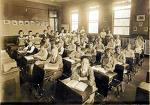
1964 – 1966
The years I went to Norland Junior High School. One memory that stands out in my mind was in 9th grade graphic arts class with Charles Lee. Charles was a very quite guy, non-athletic and a loner. We were doing silk screening and Charles was making a bumper sticker that said "Save the Everglades". No one had much consciousness about ecological concerns back than and we used to tease him and say, "Hey Charles - Save the Everglades" and laugh.
I one time asked him why he was so quite and he replied, "Silence is Golden" which we would all than tease him about also - "Hey Charles" "Yea" "Silence is Golden", we say laughing. Why this stands out is that my close group of friends didn't really tease others like this, and I in fact felt bad later for indulging in this kind of behavior, and in Charles's case I often thought how far advanced he was to have the awareness he had (compared to us stupid immature kids) and wondered what ever became of him.
I always thought of him in my later high school years as someone who was ahead of his time, and had great respect for what he was doing so many years ahead of us late social conscious awareness bloomers. Although at the other end of the country a new movement was being born my friends and I had no idea and no awareness of the emerging counterculture that would soon, so powerfully influence our lives.
“Hippie” by Barry Miles–1965 – Hippies didn’t just pop up overnight, but 1965 was the first year in which a discernible youth movement began to emerge. Most of the key “psychedelic” rock bands formed this year. On the new developing Haight-Ashbury there were the Grateful Dead, Big Brother and the Holding Company, the Charlatans and the Jefferson Airplane. On the Strip there were Love, the Byrds and the Doors. In New York the Fugs were just getting known and the Velvet Underground were getting together. This is the year that the use of LSD became widespread thanks to massive media coverage. Tim Leary went on the lecture circuit and his Millbrook mansion hosted hundreds of controlled LSD sessions. On the West Coast, thanks to underground chemist Augustus Owsley Stanley III and Ken Kesey and the Pranksters, thousands of people took uncontrolled trips at the Trips Festivals and in the new psychedelic dancehalls. The drug was still legal, but the authorities were beginning to grow restless and talk of how to control it. Over in London the Beatles took their first LSD trip and smoked a lot of marijuana. Michael Hollingshead opened his world Psychedelic Centre and the Beat Generation poets Allen Ginsberg, Lawrence Ferlinghetti and Gregory Corso read at the Royal Albert Hall. This reading acted as a catalyst for underground activity in London, as people suddenly realized just how many like-minded people there were around. This was also the year that London began to blossom into colour with the opening of the Granny Takes a Trip and Hung On You clothes shops.
“Hippie” by Barry Miles–1966 – The summer of 1966 was the real “Summer of Love”-a phrase now copyrighted by Bill Graham Enterprises. When the year opened there were just a handful of underground papers: the New York East Village Other had just started, the LA Free Press was eighteen months old, the Berkeley Barb less than half a year old. By the end of the year there were more than a dozen papers published in cities all across the country-there was even one in London. These included the San Francisco Oracle, with its ground-breaking psychedelic graphics and rainbow printed pages. In New York, 1966 saw the rise of the Fugs, Andy Warhol’s Exploding Plastic Inevitable with the Velvet Underground, and Bob Dylan retiring from public view after a motorcycle accident. It also saw the beginning of the Hare Krishna movement and the beginning of ST. Mark’s Place as the underground high street. In San Francisco the opening of the Psychedelic Shop at Haight and Ashbury gave birth to an era. This was the year the Merry Pranksters, Wavy Gravy and Neal Cassady held more Acid Tests, the year that saw the first Chet Helms Family Dog dances at the Avalon Ballroom and the development of Bill Graham’s Fillmore Auditorium. Both dance halls used a new way of advertising, with psychedelic posters so bizarre that only a stoned person could decipher the squiggly, blobby lettering and the insider drug references. It was the year that the notorious underground chemist, Owsley Stanley III, became a millionaire and his main product, LSD, became illegal.

1967 - 1969
I entered Norland Senior High School with lots of friends who I went to school with from Norland Junior High and Norland Elementary School. We all did a lot of growing up during these years and the beginnings of our identities were forming and setting in. Like in most high schools during this time there were jocks, greasers, soches, nerds, intellectuals, loners, surfers and a new emerging group the hippies or the counterculture.
I was a hybrid of sorts. The captain of the gymnastics team in 11th and 12th grade and the co-captain of the weightlifting team the same years. In 10th grade on my 16th birthday I broke 4 weightlifting records in the state high school competitions, took first place in my weight division the 123 pound class, and remained undefeated in both the high school and AAU competition (state and tri-state; and took third place in teenage nationals in Philadelphia) throughout high school.
However, I embraced the new 60's generation hippie movement and wore bell bottom jeans, long hair and a scarf around my knee (which meant I was against the war). Jim Daughitt during home room taught me all about Eastern philosophy and concepts like reincarnation, karma, dharma, human auras, prana, vegetarianism, yoga and meditation. We would go on weekends to the Theosophical Society in Miami to read on these subjects, and once in awhile a dozen or more of us would skip school, go to Fairchild's Gardens and take LSD for the day.
We went to Love-ins at Greynold’s Park and visited The Head Shop, The Micropile, yoga classes given by Yogi Rama in Coconut Grove Park and went to local concerts and festivals. I sold LSD at the pool hall next to the Cloverleaf bowling alley and nickel and dime bags and ounces of marijuana to other Norland Senior High classmates. My car had a big peace symbol painted on the hood and other slogans of the day like "make love not war". The school didn't quite know what to make of me - a gymnastic and weightlifting champion - yet a radical hippie embracing the counter culture and enjoying rock and roll music and unusual new ideas.
“Hippie” by Barry Miles–1967 – This was the year of the Summer of Love, but it also saw the beginning of a massive police clampdown on hippies and the counterculture. It opened with Be-Ins in San Francisco and Los Angeles, and saw tens of thousands of young people arrive in Haight-Ashbury, looking for love and peace and beautiful people. It was the year of Sgt. Pepper, Surrealistic Pillow, Satanic Majesties, and dozens more psychedelic classics; it was the year that Jimi Hendrix first astonished London then took on America at the Monterey Pop Festival, the festival that also launched Janis Joplin beyond the Bay Area, introduced the Who to the West Coast and Wilson Pickett to the white audience. It was the year of protest as American involvement in Vietnam continued to grow. The black community was also in uproar and 43 people died, 2,000 were injured and 5,000 made homeless in a week of riots in Detroit, Michigan. As waves of tourist, dropouts and runaways descended on San Francisco, the Diggers opened up crash pads, a free store and began a soup kitchen in Golden Gate Park while the Family Dog at the Avalon Ballroom and Bill Graham at the Fillmore both opened all week through the summer to cater to the crowds of young people. Owsley became a multimillionaire by selling LSD, then other, more dangerous drugs. Jack Casady tried some of Owsley’s new STP at Monterey Pop and finished up in jail after police found him sitting in a mud puddle, baying at the moon. The Haight became more tripped out and Berkeley more radical.

1967
During my first year at Norland Senior High I embraced the natural health food movement and had an organic garden in my back yard. I ordered lady bugs to control the aphids on my tomatoes, used organic compost I made myself and enjoyed the taste of freshly grown organic produce. Because of my participation in athletics I was taking vitamins and minerals and protein powder to help make myself a better competitor in sports. The health food movement was just beginning in those days and some people would call me a health food nut. As the counter culture movement continued to grow in our area of the world, health foods, organic produce, raw juices, macrobiotics, fasting and other health conscious modalities were a part of that growing new age awareness.
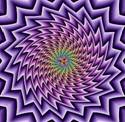
1968
The psychedelic 60’s were now making its way to Miami and Norland Senior High. We experimented with marijuana, LSD, magic mushrooms, alternative lifestyles, new music and new ideas. Some friends and I started dealing marijuana - selling "Nickel Bags" which was marijuana that fit into those old match boxes. Although I didn't know it at the time, this was the beginning of a marijuana marketing and smuggling career that would last a decade and a half and end with going to prison for marijuana smuggling.
Our class was the first group in Norland to embrace the hippie movement (some not all of us) and the class just one year before us missed that and we considered them part of the older generation with old fashion conservative ideas. In our class, when the police came to the school to show us what drugs looked like and how dangerous they were - one of our fellow classmates stole the sample of hash - and a few others smoked it behind the gym. We started wearing bell bottom jeans, started growing our hair long and went to love-ins at Greynold's Park on weekends as the hippie generation was beginning to make its appearance in our part of the world. Selling marijuana and LSD for us at this time was more a way to "raise people's consciousness" than a money making venture.
Any money we made from sales was used to pay for our own drugs so we could "Turn on, tune in and drop out" which was Timothy Leary's battle cry and the marching orders we tried to follow. For us we were providing society with a much needed way to break free of our oppressive social norms and expand everyone's awareness. Later, for some of us - our capitalistic and entrepreneurial instincts took over - and this became a very lucrative business enterprise.
“Hippie” by Barry Miles–1968 – It was the year of political activism and violence and the year of the great retreat to the country. It was the year that a commercial, superficial idea of the hippie lifestyle spread to the suburbs-through the medium of glossy magazines and pop music-and each town in America and most in Europe had a store where you could buy posters and rolling papers and the local underground paper. There were now more than 100 underground papers, ranging from the purely spiritual and psychedelic to the extreme radical, such as New York City’s Rat. Each major city now had hippie areas, or at least a hippie high street, but with high rents in the city centers hippies tended to live in groups, many of which became communes. There was a gay commune of 30 men living above a popular gay bar on Market Street, San Francisco, and hundreds living in geodesic domes in the original Drop City. There were subsistence farms, religious communities, ashrams, sex communes, covens and groups of followers of various gurus-most of whom were self-proclaimed. Most of them wore long hair, most of them smoked dope; to the general public they were all hippies. In France, a real revolution was played out along the lines of the Paris Commune, resulting in more than half the working population going on strike. Hippies were generally more politicized in Europe and a network of like-minded activists grew across the Continent. In England, however, most didn’t even notice.
From “Wikipedia” - Following in the well-worn footsteps of the Beats, most hippies used cannabis (marijuana and hashish), considering it pleasurable and benign. Many enlarged their spiritual pharmacopeia to include hallucinogens such as LSD, psilocybin and mescaline. On the East Coast of the United States, Harvard University professors Timothy Leary, Ralph Metzner and Richard Alpert (Ram Dass) advocated psychotropic drugs for psychotherapy, self-exploration, religious and spiritual use. Regarding LSD, Leary said, "Expand your consciousness and find ecstasy and revelation within."[
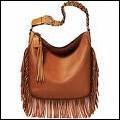
1969
After I graduated from high school I opened a leather shop in North Miami with David Tobias (Norland class of 69) as we ran our leather business throughout high school working from my home and my fathers furniture store (where groups of our friends occasionally did LSD all night and more than occasionally smoked pot as we all worked) where one night we put Sally Heck (Norland Class of 69) in a big furniture box. We thought that was very funny - Sally was enraged and didn't think it was funny at all. This new leather shop in North Miami also had an “Ecology Information Center” in it to alert people to the ecological problems facing society at the time. Later that year I started classes at Miami Dade Junior College, where I took a variety of courses including one on Hare Krishna taught by the Hare Krishna devotees.
“Hippie” by Barry Miles–1969 – It was the year of extremes, of violence and madness as well as achievement and success. The Rolling Stones’ experience encapsulated it all. Brian Jones became the first of many rock casualties when his drug taking made it impossible for him to function as a member of the group and he was thrown out. No one expected him to die, but he did shortly afterwards as the result of careless behavior at a party at his country house. At the concert swiftly dedicated to his memory in Hyde Park, London, the Stones performed for half a million people on a beautiful English summer afternoon. It was an idyllic day with no trouble. But when they tried to repeat it in San Francisco, at the Altamont Speedway six months later, they inadvertently presided over a murder as Hell’s Angels ran amok and stabbed a man to death right in front of the stage. This was the year that hippies realized once and for all that the Hell’s Angels never did believe in love and peace, and were not about to change. In August, despite two downpours, the Woodstock festival had demonstrated how the communal spirit should work. Most people agree that the actual experience was horrible, but ist was that shared experience that created the so-called Woodstock Generation. However, the happy communalism of a circulating joint and shared spiritual experiences on acid resulted in big-time drug dealing. And wherever there are millions of dollars to be made illegally, there are also beatings and murders as people carve out their territory.
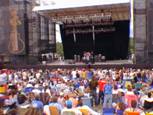
1970
Went with Robin Lane hitchhiking to the town of Woodstock and Fleishman, New York where she was going to spend the summer in a hippy student commune. I sadly said goodbye to Robin (who I grew very fond of on the trip) and continued my travels hitch hiking to New Mexico for a summer solstice gathering in the middle of the desert with Yogi Bhajan and a group of yoga students. This was the first, of a now yearly summer solstice gathering of Kundalini Yoga teachers and students from the 3HO Organization. I than hitchhiked on to California to a town called Felton where I stayed at what I called the commune of women and children. This was a commune with about 7 or 8 women and their children. A man lived in a trailer out in the field and they all lived in the house. In the morning while sleeping on the couch I woke and watched as the women all worked together getting the children ready for school – making lunches and making sure they were dressed properly, etc. I thought this was so cool – so nurturing, caring, tender, sweet, and beautiful to me and that was the moment I fell in love with the feminine nature and thought about how cool a world built on these energies would be like. I then continued north to meet friends from high school (David Tobias, Bob Milstein, and Arthur Promoff) than continued hitchhiking back to Miami, Key West, the Atlanta Pop Festival (I missed the Woodstock festival so wasn’t about to miss the Atlanta Pop Festival that summer) and back to Miami where at a Poco Concert met another friend from Norland (Dianne Arias – class of 71) who later I married at a Yoga Ashram in North Miami by Yogi Rama, and still later had my first son Aubree with.
“Hippie” by Barry Miles–1970 – The year was dominated by widespread protest against the renewed American bombing of North Vietnam and the illegal invasion of Cambodia, which resulted in National Guardsmen killing four students at Kent State University. As if the Chicago police riot of 1968 had not convinced Americans that their country was heading towards a police state, the Chicago Conspiracy Trial in December 1969 did a lot to reinforce that idea when Judge Hoffman ordered Black Panther Bobby Seale to be bound in chains, shackled and gagged as he sat in court, unable to take part in the travesty of justice that unfolded before him at his trial for conspiracy. The split up of the Beatles, the most influential rock ‘n’ roll band of all time, left an enormous hole in popular music that has never been filled. Without their leadership, popular music began to fragment into a collection of competing genres, and today a band with such wide appeal is almost inconceivable. It was a new decade and many things began to change. 1970 saw the birth of the modern gay and lesbian civil rights movement, Gay Pride, in a series of marches to commemorate the Stonewall Inn rebellion. It was also the year of the first national Earth Day in the US, heralding the ecology movement and drawing support form all sections of society, from industrialists to students, Republicans to Democrats and ecology anarchists. Because it was organized by politicians, it quickly resulted in legislation, setting in place a number of important safeguards against pollution.
From “Wikipedia” - Travel, domestic and international, was a prominent feature of hippie culture, becoming (in this communal process) an extension of friendship. School busses similar to Ken Kesey's Furthur, or the iconic VW bus, were popular because groups of friends could travel on the cheap. The VW Bus became known as a counterculture and hippie symbol, and many buses were repainted with graphics and/or custom paint jobs — these were predecessors to the modern-day art car. A peace symbol often replaced the Volkswagen logo. Many hippies favored hitchhiking as a primary mode of transport because it was economical, environmentally friendly, and a way to meet new people
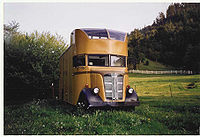
Hand-crafted Hippie Truck
Hippies tended to travel light and could pick up and go wherever the action was at any time; whether at a "love-in" on Mount Tamalpais near San Francisco, a demonstration against the Vietnam War in Berkeley, one of Ken Kesey's "Acid Tests", or if the "vibe" wasn't right and a change of scene was desired, hippies were mobile at a moment's notice. Pre-planning was eschewed as hippies were happy to put a few clothes in a backpack, stick out their thumbs and hitchhike anywhere. Hippies seldom worried whether they had money, hotel reservations or any of the other standard accoutrements of travel. Hippie households welcomed overnight guests on an impromptu basis, and the reciprocal nature of the lifestyle permitted freedom of movement. People generally cooperated to meet each other's needs in ways that became less common after the early 1970s. This way of life is still seen among the Rainbow Family groups, new age travelers and New Zealand's housetruckers. A derivative of this free-flow style of travel was hippie trucks and buses, hand-crafted mobile houses built on truck or bus chassis to facilitate a nomadic lifestyle. Some of these mobile gypsy houses were quite elaborate with beds, toilets, showers and cooking facilities.

1971
Moved into a home in North Miami to experiment with communal living with Dianne Arias, Robin Lane, Mike Nadioka, Kelly Daughitt, etc. We made candles and sold Shaklee all natural organic products for an income (not a good income) and called ourselves "The Children's Commune" to reflect our outlook on life as Flower Children, and to try living in harmony with a group of people with idealistic outlooks so common in the Hippie Era.

1971
Continuing with experimenting with the different lifestyles of the Hippie generation Dianne and I decided to get back to nature so we moved into a tent on a 360 acre orange tree grove in Davie, Florida. We made a one acre organic garden, sold the organic oranges to a food co-op in Coconut Grove (gas was very inexpensive back than) and I picked oranges for my main income ($1.00 a bushel) and mowed the orange groves with the tractor mower which I though was really cool and it was a blast doing.
Dianne's sister Suzanne and her husband Roger McCarthy (a Norland graduate from the class of 68, and fellow gymnast from the Norland gymnastic team) moved to the orange grove and lived in their school bus converted into a hippie home on wheels with their two young children Brian and Deanna. Now we were living the "Back to Nature" lifestyle. We read the "The Mother Earth News" and "The Whole Earth Catalog" in preparation for buying our own land one day, and were all vegetarians at this time.
“Hippie” by Barry Miles–1971 – In 1971 Jim Morrison joined Brian Jones, Janis Joplin and Jimi Hendrix in the roll-call for rock ‘n’ roll superhero deaths. Frank Zappa almost joined the list when a crazed fan threw him from the stage ten feet into the orchestra pit, knocking him unconscious. Zappa described his injuries: “I had a hole put in the back of my skull, twisted my neck, broke my wrist and leg. I was in a wheel chair for nine months and off the road for over a year.” His voice dropped an octave as a result. The two main venues to showcase underground rock-bill Graham’s Fillmore East and Fillmore West-closed their doors this year, and “rock” as it was now called became increasingly a business rather than a calling. On 30 March, the Rolling Stones gave a huge party in London before moving to the French Riviera as tax exiles, once and for all removed from the everyday cards of life. On a more positive note, 50,000 people gathered in New York’s Central Park for the 1971 Earth Day and the ringing of the United Nations Peace Bell to announce Spring received worldwide attention And the hippies? The few hardcore ones left were mostly living in country communes. Many of their ideas had spread into the general community: vegetarianism, organic food, home-made bread. The consumer side of the movement caught on fast in America as people saw the value in the return to healthy living. Similarly, by the early 70s, most towns now had a yoga center, and possibly even a meditation center of some sort. By 1971 even politicians were wearing their hair down to the collar.
From “Wikipedia” - Another influence from the world of American publishing was the unprecedented, vigorous, and intelligent Whole Earth Catalogs. Stewart Brand and a circle of friends and family began the effort in 1968, because Brand believed that there was a groundswell of biologists, designers, engineers, sociologists, organic farmers, and social experimenters who wished to transform civilization along lines that might be called "sustainable." Brand and cohorts created a catalog of "tools" - defined broadly to include useful books, design aids, maps, gardening implements, carpentry and masonry tools, metalworking equipment, and a great deal more.
Another important publication was The Mother Earth News, a periodical (originally on newsprint) that was founded a couple years after the Catalog. Ultimately gaining a large circulation, the magazine was focused on how-to articles, personal stories of successful and budding homesteaders, interviews with key thinkers, and the like. The magazine stated its philosophy was based on returning to people a greater measure of control of their own lives.
Many of the North American back-to-the-landers of the 1960s and 1970s made use of the Mother Earth News, the Whole Earth Catalogs and derivative publications. But as time went on, the movement itself drew more people into it, more or less independently of impetus from the publishing world

1972
Dianne got in a car wreck so we had to move back to my parents home (who had moved to Lakeland, Florida) to live while she recovered. We than moved to a duplex in North Miami, where we had a pet white rabbit named Rabbit, and a black dog named Shanti. I had a tree trimming business with David Tobias (Norland Class of 69) called "The Tree People" and I also sold Shaklee natural organic products. We also worked on an underground paper called "The Rainbow Bridge" which featured articles on organic gardening, yoga, health foods, communes, pop festivals, and other articles the hippie generation was involved in. Our income was meager and we struggled as a young couple to make ends meet.
Commentary by Bruce-1972 – The hippie movement was an enormous catalyst for change in literally every aspect of society and the various social changes it started continued to grow and expand rapidly throughout our world for the next decade and more. One of those changes was the rapidly growing use of recreational drugs – including marijuana in the largest segment of the population the post war baby boomers. This demand continued to grow at a meteoric rate which created such a demand that no matter how much marijuana my fellow outlaws and myself acquired – we never had close to enough to fill the demand. We could literally sell any amount of marijuana we had on hand with no trouble at all.

1972
While I was struggling to earn an income for my new wife and soon to be son, Jeff Tuckband (Norland Class of 69) asked if he could stash a bale of marijuana at my home that he brought down form Gainesville, Florida where he was attending college. He said he'd pay me $500 and if I could sell any of the pot I could charge $10.00 more a pound and make even more money. The second time he did this David Tobias (Norland Class of 69) and I sold the entire 50 pounds ourselves and the start of a big time marijuana business began. I was soon not struggling with finances any longer, as one bale turned into as many as we could get. The demand for marijuana at this time was huge as the hippie movement was in full swing by now.
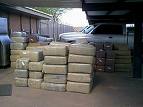
1972 - 1973
During this period things were moving and shaking in the marijuana business in south Florida with loads coming into Florida constantly. Cocaine hadn't hit the mainstream yet, so it was a peaceful, lucrative and entrepreneurial time. I moved into a stash house in SW Florida and began flying god bud to California on regular commercial flights, simply checking three suitcases with 100 pounds of marijuana stuffed in them. I was met at the airport by Arthur Promoff (Norland Class of 69) who sold most of the marijuana for me in California. This cottage industry at the time actually provided a great alternative income for tons of young adults who were part of the hippie counterculture.

1973
My first son Aubree was born using natural child birth in the "Birthing Room" in a local hospital with myself in the room helping a little with coaching my wife Dianne on her breathing, etc. Birthing Rooms were becoming more and more popular in regular hospitals since so many of our generation opted for natural childbirth and home births. The hospitals were loosing out on a lot of income so along with the economic incentive and the changing times - natural childbirth in Birthing Rooms with family members in attendance was rapidly spreading across America. We took natural child birth classes before our son's birth, and consulted the Le Leche League on breast feeding after Aubree was born and was nursing.

1973
Nature beaconed and so I moved with my wife Dianne and newborn son Aubree along with my sister-in-law Suzanne and her husband Roger to Arkansas where we bought 40 acres of land. The dream was to live off the land and get back to Nature on our own property as we had tried earlier in the orange groves in Davie.
“From Wikipedia” - The phrase "back-to-the-land movement" refers to a North American social phenomenon of the 1960s and 1970s. This particular back-to-the-land movement was a migration from cities to rural areas that took place in the United States, its greatest vigor being before the mid '70s.
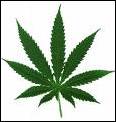
1973
Well Back to Nature didn't cut it - too hard to earn an income on the land in Arkansas. So Back to Marijuana seemed like a good choice economically. I moved back to Ft. Lauderdale, Florida and began selling marijuana again. This time on a bit larger scale than before, as the industry as a whole was operating on a much larger scale in south Florida, now the main import area for the US for marijuana coming in from Colombia and Jamaica.
“From Wikipedia” - For the most part, the back-to-the-landers of the 1970s were unprepared for the realities of a rural lifestyle, and many believed that they could get by without a steady source of income by selling produce and other home-made items. In reality, the problems of costs (machinery, household expenses, seeds and other supplies) and limited produce-distribution options for family farms of modest scale were difficult ones even for farmers who had been raised in the lifestyle by their parents and grandparents. Some back-to-the-landers became integrated fully into their adopted rural communities, but perhaps most returned to city living after a few years in the country, mainly because of financial trouble and relationship problems.

1974
An interesting year. I continued to sell marijuana, got a divorce, and starting making a lot of money in the marijuana trade. In October I traded 10 pounds of Red Bud marijuana for a truck load of Redwood Burl slabs in northern California (where I sold a lot of my marijuana) and moved to Gainesville, Florida.

1975 - 1978
I opened a store to sell the finished Redwood Burl tables my brother Craig (Norland Class of 72) helped me make in Gainesville, Florida called The Magic Woodsman. For the next 3 1/2 years I expanded the Magic Woodsman to stores and manufacturing plants in Miami and Ft. Lauderdale and was the third largest natural wood manufacturer in America at the time. I also expanded my marijuana business during this period and in late 1975 earned my first $100,000 by selling a load of Jamaican marijuana.
By 1976 at age 25 I was a multi-millionaire due mostly to the exploding marijuana business in south Florida. I sold friends loads, off-loaded associates boats and freighters, and brought in my own boat loads and air plane loads. It was the hey day of marijuana with millions of pounds coming into south Florida with virtually no decent law enforcement to stop the flood. Most of my associates also became multi-millionaires during this time.
The demand was at its peak and this was the days when practically every boat in the region was being used to bring in the flood of marijuana. My particular business associates were non-violent and although it did blend over - we mostly stayed away from cocaine - at least selling it large scale like we did marijuana. I won't mention the others from our class or other Norland class's that dealt and smuggled marijuana during this time - the list is way too long!

1978
Things finally started getting too hot in southern Florida. With a warrant for my arrest for that Jamaican smuggle back in 1975 (with "The Daring and Dashing Smith Brothers" as the newspapers called Darrell and Tracy Boyd - my co-conspirators in that case) I packed up and moved my entire smuggling organization to northern California.
In California I became the largest marijuana smuggler in US west coast history, pioneering a new smuggling route from western Colombia to the San Francisco Bay going under the Golden Gate Bridge to a 1,000 concrete pier I owned in Richmond. The news media dubbed me "The King of Pot" and I earned over $100 million dollars by the time I was 30 years old (I wonder if that's "Another Victory For Norland High").
That part of my life will be aired on a CNBC Documentary Special on the marijuana industry in northern California in January 2009 (covering my adventures 30 years after the fact). Four and half years after moving to California (in March of 1983) I was arrested in Chicago and went straight to prison, without passing GO. This event ended my marijuana career which all started by selling nickel bags of marijuana in high school at Norland Senior High. Go Vikings!
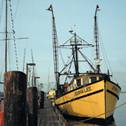
1979 - 1983
During this period I became the largest marijuana smuggler in US west coast history (Go Norland!), and as the newspapers said I had a fleet of boats larger than most countries navies ("The Vikings" were seafarers you know). I lived in a $3 million dollar mansion on 250 acres in the mountains of northern California, bought my wife (at the time) an airplane for her birthday, built 4,000 square foot house boats on a 1,000 foot pier I owned in the San Francisco Bay as a front for my smuggling operations there, and commanded a worldwide network of marijuana smugglers, distributors and suppliers consisting of several hundred people.
I had a motor home with over a million dollars of sophisticated communications and surveillance equipment that tracked every Coast Guard boat in the Pacific Basin (800,000 square miles of Ocean) from South America to Alaska to the PAC Rim countries. By the time I was 30 I had made over $100 Million in profits and in 1980 I spent $500,000 every week that entire year.
The media dubbed me "The King of Pot" and for the honor of that title I got to spend 9 years in federal prison. We were a totally non-violent organization and in fact sort of just a hippie band of well organized care free entrepreneurs in the marijuana smuggling business. The next few timeline entries are some quotes from newspaper articles that came out during that time about me and what they called "The Perlowin Marijuana Smuggling Organization" and dubbed me “The King of Pot”. Looking back now it's amazing that this period of my life was only 15 years from selling my fist nickel bag of marijuana at Norland to other classmates to my arrest.
We moved around the country, and the world, at what now seems like hyper speed and lived what now seems like 150 years rather than just 15. I'll tell you - after living that fast a pace for that long - I actually enjoyed a break and the relaxation that prison gave me. And like most of my life prison too was an unusual experience and not what one would think it was.

1979
My second son Jeremy was born at home in our estate in Ukiah, California. We had a natural child birth and I personally delivered him under the watchful eyes of two mid wives who were there to make sure everything went fine. Natural child births and breast feeding were two movements that the hippie generation embraced as much more healthful for the child and mother than the artificial formulas being fed to newborns and young infants and the un-natural births the plastic phony generation (as we referred to them) practiced as the norm.

1980
"Rather than wait years to move up through the corporate ranks, Bruce Perlowin parlayed a knack for organization into the largest drug smuggling operation in West Coast history. Between 1979 and 1983 he smuggled half a billion dollars' worth of marijuana into California; nearly 200 tons. He managed a fleet larger than most countries' navies, hundreds of employees (including an entire Colombian village) and a money laundering ring that extended from Las Vegas casinos to banks in the Cayman Islands. Perlowin's management skills were formidable, his attention to detail legendary..." California Magazine - "Smugglers Inc."
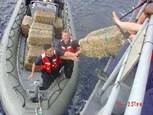
1981
"Joseph P. Russoniello, the U.S. Attorney for Northern California...called his operation 'one of the largest and most audacious'." The Miami Herald - "California's Marijuana Magnate..."
"Bruce J. Perlowin could give the CIA lessons on how to run an operation - or a country." The Berkeley Monthly - "The King of Pot"

1982
"Bruce Perlowin was an entrepreneur of a different kind. He used his organizational genius and business acumen to build the biggest and most sophisticated marijuana smuggling empire in California history." The San Diego Union - "Not Your Usual Entrepreneur."
"Bruce J. Perlowin is a low-key personable man who doesn't seem to fit the stereotype of a big time drug smuggler." The Ukiah Daily Journal - "Drug Kingpin Details Smuggling Conspiracy".
"Perlowin ... a bespectacled, studious and mild-mannered man ... looks more like Mr. Peepers than one of the world’s largest drug dealers." The Berkeley Monthly - "The King of Pot"

1982
Running a world wide smuggling empire was getting a bit stressful and after awhile I sort of became a slave to my business and lost touch with more meaningful things in life. During this year I started getting back into yoga and meditation which was the opposite of the quick paced fast life I was living. I began to crave the more relaxed innocent days of my youth and this helped me become more balanced and closer to nature and things that were more important than just making millions of dollars.
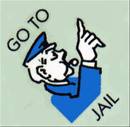
1983 - 1991
On March 11, 1983 right after I turned 32 and while on an airplane trip to a yoga seminar I was arrested by Federal agents and went directly to jail without passing GO (very sad story). However, my prison time was about as unusual as most of my life as I was in the last two co-ed prisons in America.
I actually walked around holding hands with my girlfriend and at the end of the day the men and women just went into separate units. My best friends were spies, assassins, terrorist, hijackers, jewel thieves, bank robbers and smugglers - and that was just the females! We were always sneaking around trying to kiss our girlfriends and the guards were always sneaking around trying to catch us.
Actually, from the moment I was arrested I saw it as an unprecedented opportunity of a lifetime to learn grow and study. so while in prison I ended up getting five college degrees, read over 100 books a year, learned and taught computer technology to fellow inmates, as well as taught them yoga, nutrition and algebra courses. I took literally dozens of courses and classes offered in prison and got in really good physical condition. I did a time management study one time for 18 months and found out that I spent about 8.5 hours a day in some form of self improvement - so it was a really incredible (and fun) experience for me to go through (though I don't recommend it for everyone).
While in prison I received my Bachelors degree - with a 4.0 grade point average - making both the College's Dean's List and the President's List as well as the National Dean's List. Separately, I also received my Bachelors and Master's Degrees in Nutrition through correspondence courses and completed all the course work for my PhD. It was a time of intense study and self improvement. The next few entries along this timeline are some reports from the media about my time in prison.

1983 - 1991
"Some might think his arrest was the beginning of the end for this incredibly energetic man, who was facing a lengthy prison term because he wouldn't squeal on his accomplices. Actually it was the start of a new life ... Perlowin wants to get his Ph.D in psychology, criminology and nutrition." The Ukiah Daily Journal - "Perlowin Wanted Out But Couldn't Stop."
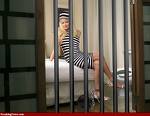
1983 - 1991
Being in prison may have ended my marijuana smuggling career however being together with women there made this a very different experience than anyone would ever expect.

1983 - 1991
What was my worse experience in prison some people have asked me over the years? Nine years is a long time to spend in prison and there had to be some pretty bad experiences during this time. I've thought about it over the years and recently came across a letter I wrote to my sister in law entitled "Your Worst Nightmare Comes True" about a real life true story from a coed prison". So I guess this story would probably qualify as one of the worse experiences I had in prison - and should warn everyone about breaking the law - and having to go to prison:
Prison is terrible! Some of the cruelest most soul wrenching experiences happens in prison. It's hard to imagine the horrors that occur in here and the average person wouldn't be capable of believing it. Just last week something I witnessed, and actually participated in happened which threw me into the pits of depression. If I didn't witness it and hear it with my own ears I would never have imagined such a thing could ever happen in a million years. It was horrible - my stomach gets weak thinking of it even now.
I was sitting on the bench in front of unit one with Candice. Candice is an intelligent woman, extremely pretty and has a luscious body - the kind I'd love to - well never mind, it's nice and lean and cute as can be. So anyway we were sitting there quietly minding our own business, talking about male and female relationships in a coed prison setting when I decided to ask her if she wanted to go to the movies. At Pleasanton - the Federal Prison where we were - they showed movies every Friday and Saturday night and the inmates would actually go to the movies together just like a regular on a date on the streets.
I noticed out of the corner of my eye people going into the unit, but didn't pay attention to them as the bench we were sitting on was off to one side of the main walk way. Than all of a sudden with absolutely no warning at all
To be continued on the next entry on this timeline.....

1983 - 1991
Continued from last entry...
Than all of a sudden with absolutely no warning at all; Candice says, "No, I don't want to go to the movies with you".
I was dumb struck; I couldn't believe it. I mean I've been to jail where there were rapes, stabbings, beatings, suicide attempts - with blood all over - fights, guards killing inmates, inmates killing guards, rumbles and gang fights and more. But this was too much. How cruel, horrible and evil!
I cringe when ever I think about it. NO MOVIES! No hand holding in the dark, arm around her shoulder or trying to sneak a kiss without the guards seeing. God, why me - what have I done to deserve such a terrible fate?
So I got carried away a little bit and smuggled in half a billion tons worth of marijuana. Is that any reason to send me to this dismal sub-human place where beautiful women like Candice so "NO" when you ask them on a date to go to the movies?
I ask you - is there any justice in the world? This is cruel and unusual punishment and should be illegal! God - I'll never smuggle again. The conditions here are horrible - your worse nightmare come true!
So that was probably my worse experience in prison. There were some dangerous moments - like when my girlfriend the Russian Spy - KGB Agent came around the corner unexpectedly and caught me rubbing Candice's rear end - the look she gave me was definitely a very dangerous moment (humm, now that I think about it - maybe that's why Candice wouldn't go to the movies with me).
I mean coed prison was a really wild experience. Where else could you go where the Russian Spy tells you that you can't sit next to the Puerto Rican terrorist in class because she is jealous?
Describing this co-ed prison experience would make a great sit-com as the characters were interesting and colorful and all had criminal backgrounds, and the male - female relationships in this setting was often times very humorous (or tragic as in my story above).

1983 - 1991
My best women friends or associates in prison were the Russian Spy (who was very cute), five Puerto Rican terrorist - however, they say "freedom fighters" - one of which I had a serious crush on for awhile, Sara Jane Moore - the American lady who tried to assassinate President Ford, Julie (she had a great - well - never mind) the Croatian hijacker who hijacked an airplane to bring awareness to the Croatian problems at that time.
There was Candice the jewel thief and cat bugler who wouldn't go on a date to the movies with me, Carol the "Queen Pin" - my female counterpart from the East Coast of the US, and two really cute and gorgeous bank robbers - Trina and Danielle.
Lots of other famous or infamous women passed through Pleasanton during the time I was there like Ma Anand Shelia the secretary at Rajneesh Purim the huge commune in Oregon where they tried to poison the whole town during election time to vote their own people in. There was Gezelda Blanco "the black widow" who allegedly was behind most of the killings during the Cocaine Cowboys hey day in Miami and was featured in the documentary "The Cocaine Cowboys", and others just as colorful and interesting.
I know of one person who says she is writing a sit-com series for TV on coed prisons and I often wondered why no one else has done this as the content is rich and diverse and very interesting. I pretty much loved every moment of this totally unique and unusual experience.

1983 - 1991
"College is one of the best forms of rehabilitation, experts say, helping inmates see themselves and society from a different point of view. Those who do well in class often gain greater self respect and set goals for law-abiding life after prison ... Bruce Perlowin ... is one of the three scholastic stars who have emerged, all with flamboyant criminal pasts and ambitious hopes for the future." The Valley Times - "Prison U - Inmates Learn Behind Bars."

1991
I was released from prison in late 1991 (October 15th) and spent the next 6 months in a half way house in Oakland, California. However, before my release I made up a resume sort of a joke at first, however when the resume got out it created a media sensation. Here's that story:
I was thinking one day, before I got out of prison, "What am I going to do about getting a job? What am I going to write on my resume - Federal prisoner for 9 Years! Marijuana King Pin for 15 years before that?" That wasn't going to make it. Then I decided I didn't want to work for anyone who didn't know about my past, I wasn't into lying about it or hiding it (sort of like now - huh) so I went for it.
I titled the resume "Ex-Marijuana King Pin Needs Job - An Unusual Resume." Then I just quoted all of the great things the newspapers said about me over the years, "Genius Business Acumen", "Master Organizational Skills", "My Attention to Detail Was Legendary", "I Could Teach the CIA How to Run an Operation or a Country", and so on. Well an LA Times reporter who had done an earlier article about me called and wanted to know what I was doing - so I sent him the resume. He wanted to do a story and I agreed to the interview - and that was it.
The resume story broke in the LA Times, and literally went worldwide over night. CNN, Newsweek, Readers Digest, Harpers and 100's of other US and foreign magazines and newspapers carried the story. I got over 200 job offers, did a couple of radio interviews with an Australian radio station, got offers to be on all the TV talk shows, got movie offers for my life story, and on and on. It was really quite interesting.
The first job I took was the National Sales Manager for Rainforest Products. That was a really cool company that sold a cereal called "Rainforest Crunch" that used sustainable products from the Brazilian Rainforest in its efforts to preserve "The Lungs of the Earth" our tropical Rainforest. I liked that noble idea, so I accepted that job offer.
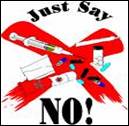
1992 - 1993
A high school teacher read the resume story to her Current Affairs class, and one of her students said, "Bruce is stupid for getting a job - he should go back to drug smuggling." So she called me up and asked if I'd do a drug talk to her Oakland school class. I told her I would, yet don't expect it to be the generic phony talk that doesn't impress anyone (except possible the speaker). I'd come in, however, I'll tell the truth about alcohol and drugs. She agreed saying, "That's what the kids want, the real truth about drugs." Now I never dealt cocaine and crack (which is way worse) was barely around when I went to prison in early 1983. Yet I saw plenty of shattered lives, both male and female, that it caused - inside of prison (as a lot of crack heads ended up there), and there's absolutely nothing redeeming about it what so ever. So I went and did a very unusual, powerful and effective drug talk to the kids.
The kids listened to me because of my background! Anyway, that made the front page of the Oakland Tribune. Then I teamed up with Chuck Latting - the FBI agent who arrested me 10 years earlier. He was now retired from the FBI and the assistant director of alcohol and drug programs for the state of California, appointed by the Governor - and for the next 18 months we were the most sought after anti-drug speaking team in America.
We never got paid; we just volunteered for this work, and got all sorts of accommodations, awards, thank you letters (which was better than pay) and media attention. From the Boy's Ranch to Church Youth Groups, to the Rotary Club to the California Women in Law Enforcement, to all levels of schools we gave talks when ever we were asked. It was very rewarding in terms of being able to turn kids away from drugs and alcohol.

1992 - 1993
Jerry Rubin (of the infamous "Chicago Seven" and radical from the 60's) also read the resume story. He was now a network marketer making $60,000 a month selling nutritional products for a company called Omnitrition. His idea was to have me run his training center in Los Angeles and groom me to be his network marketing protégée.
Jerry called me up and said, "Bruce, you sold over a billion dollars of marijuana, basically via network marketing (or people to people marketing) and you'd be great selling Omnitrition, building a downline and running my Training Center in Los Angeles".
So I moved to Los Angeles, lived with Jerry for 6 months and ran his training center for one year while Jerry taught me everything he knew about network marketing - both traditional network marketing training and his specific insights into the field in which he was clearly a creative genius in that area. At Omnitrition I excelled in that company and built up a very decent monthly check, becoming the top new distributor in that company.
During this time I discovered the opportunity in the rapidly growing telecommunications industry and later opened my own network marketing company in the telecommunications field called GlobalCom 2000. However, I stayed in close touch with Jerry and when he died (hit by a car while Jay Walking - breaking the rules to the end) we were collaborating on a book called "The Capitalist Manifesto" which is a new paradigm in how to operate in a Capitalistic environment. Today I call the concepts we were working on "Compassionate Capitalism" or "Quantum Economics". It operates totally different than the way economics works today with different laws, realities and results. However, that is a story for another time and place.
Jerry Rubin was a leading figure in the movements of the 60's, 70's and 80's. A colorful, controversial and historical figure; and for me a great friend and colleague - one I will always remember with fondness and with love.
  
1993 - 1994
Globalcom 2000 was the first network marketing company I owned with my partner Don Steinberg, and it had quite an impressive history. We sold long distance and phone cards and in fact that company actually dominated the phone card industry in America in 1993 and 1994. We did everything first: the first time a retail store put their logo on a phone card was 7-11 and we did those phone cards.
Our Marilyn Monroe phone card (the first of what would be many more Marilyn Monroe phone cards in the industry to follow) was the number one collector card for 1993. It made the front cover of England's Collector Card Catalog, and our "Marilyn for Christmas" made the front cover of Germany's Collector Card Catalog. We had the first customize branded phone card vending machine in America, the first Magazine cover on a phone card, first solid gold phone card, first $1,000 phone card, first fund raiser phone card (we did a lot of fund raiser phone cards - as I am very cause oriented) the first ethnic phone card and half a dozen other firsts in the phone card industry. During this time we were also the fastest growing phone card company in the US.
At the end of 1994 Don and I decided to sell this company and branch out into another area of telecommunication which had more appeal to a global market place in order to more easily penetrate the international markets and take advantage of a world wide network marketing company expanding into many countries.
With the experience and industry connections we gained in Globalcom 2000 Don Steinberg and I opened our next network marketing company "One World Communications" which sold CallBack and phone cards worldwide and this now allowed us to penetrate the global telecommunications market place.

1995 – 2009
One World Communications, Inc. almost immediately became the fastest growing CallBack Company on earth and broke a network marketing record by opening 187 training centers worldwide in 9 months. (The previous record was 100 training centers in one year) and a record that hasn’t been broken in over a decade and a half. We used to have a conference call with a room full of people in 30 to 40 countries online every week. Don Steinberg would travel around the world and I would work from the home office in Petaluma, California.
One World Communications, Inc. had spectacular ups and some downs and has gone through numerous changes over the years since it started. I personally went off and started numerous other companies in the barter industry, alternative health care industry, gold mining as well as did network marketing on the side part time.
I would come back and work with the company in its various phases and evolutions over the years and today I am a major stock holder in the surviving company which is now a public company, which in the end of 2008 and the beginning of 2009 is aggressively continuing its international marketing expansion both to network marketing companies and its own direct sales. With offices in 7 countries and telecom switches in 5 countries our current company is continuing its mission of “Connecting Your World”.
2010 – Current State of Affairs and Adventures
It’s now been almost 30 years since the unusual, fun and exciting adventures took place in my marijuana smuggling career , and interesting enough things seem to have come full circle in my marijuana career. In late 2008 the producer of a documentary for CNBC called me up and said he was filming a show on the Emerald Triangle of northern California called “Marijuana, Inc.” (http://www.cnbc.com/id/28281668) and wanted to do a segment on my smuggling career – would I fly from Florida where I was living at the time and be part of that documentary? I said yes and when Marijuana, Inc. ran in 2009 it became the most watched documentary in CNBC history – instantly making my story and myself a bit of a celebrity in the marijuana movement. That documentary continues to run to this date airing close to 120 times thus far.
That documentary created all kinds of feedback from the medical marijuana movement and other interested parties from book deals to movie deals. My partner Don Steinberg and I decided to take a look at the medical marijuana industry and one thing led to another and after a lot of consideration we changed the name of our public company to “Medical Marijuana, Inc.” and became the first company in US history to go into the medical marijuana industry with the stock symbol MJNA. We trade on the Pink sheets in the US.
It took us about a year (we’re now one and a half years old with MJNA) to solidify where we wanted to position ourselves in this newly emerging multi-billion dollar industry and while we do a lot of things in providing “solutions for an emerging industry” (we do everything in the industry except medical marijuana dispensaries and growing medical marijuana – since it’s still against federal law and we are a public company – I’d rather play it safe this time around), our recent focus is two divisions of our company. One is our Expo division which does large industry trade shows which are multifaceted – including industry speakers, vender booths, workshops, hemp fashion shows, entertainment, celebrity appearances and a night time concert. Our next one is in the fabled Silverdome in Pontiac, Michigan just outside of Detroit where we hope to have 500 venders and 100,000 attendees during this 3 day event over the Halloween weekend, October 29, 30 and 31st (see: www.harmonyharvestfest.com).
The next exciting division of MJNA is a network marketing company called “The Hemp Network” again another first – this one being the first marijuana MLM in history or the first hemp network marketing company in history selling all hemp products (industrial hemp products which are legal in all 50 states – not the marijuana plant used for medicine or recreation – you can’t get high from industrial hemp at all – but it’s other uses are earth shattering in their applications). The Hemp Network is just now launching and as everyone knows getting in on the ground floor of any network marketing company is a very desirous place to be. One way I see this is that it can be the funding mechanism for the people who want to change the world (see: www.thehempnetwork.com or just Google that phrase to find hundreds of distributor’s websites already in and marketing The Hemp Network). This is actually Don and I’s third network marketing company – and with the first two (GlobalCom 2000 and One World Communications) being wildly successful – we anticipate the same thing and even bigger this time.
With a major motion picture being done on my life story, I guess when my little brother (when he found out I was going back into the “medical” marijuana industry again – even though this time it’s totally legal) Jed said, “Is this what you want to be remembered for – marijuana”? I answered, “I guess that’s my calling – and it happens to be an industry I love – for way too many reasons to explain very briefly – but mostly because with The Hemp Network – I truly believe we can all collectively change the world for the better – and that is my calling”.
So I invite everyone to join me in spreading the word about industrial hemp by signing up in The Hemp Network today. The hemp movement says that hemp can save the planet, which is a pretty farfetched idea at first glance. However, just a small bit of research (like reading the late Jack Herer’s book “The Emperor Wears No Clothes” available on our website) or watching a few of the short videos on our website (www.thehempnetwork.com) will make even the most skeptical person scratch his head and think – gee, this does make sense – maybe hemp really can save the planet.
2010 – Current State of Affairs and Adventures
It’s now been almost 30 years since the unusual, fun and exciting adventures took place in my marijuana smuggling career , and interesting enough things seem to have come full circle in my marijuana career. In late 2008 the producer of a documentary for CNBC called me up and said he was filming a show on the Emerald Triangle of northern California called “Marijuana, Inc.” (http://www.cnbc.com/id/28281668) and wanted to do a segment on my smuggling career – would I fly from Florida where I was living at the time and be part of that documentary? I said yes and when Marijuana, Inc. ran in 2009 it became the most watched documentary in CNBC history – instantly making my story and myself a bit of a celebrity in the marijuana movement. That documentary continues to run to this date airing close to 120 times thus far.
That documentary created all kinds of feedback from the medical marijuana movement and other interested parties from book deals to movie deals. My partner Don Steinberg and I decided to take a look at the medical marijuana industry and one thing led to another and after a lot of consideration we changed the name of our public company to “Medical Marijuana, Inc.” and became the first company in US history to go into the medical marijuana industry with the stock symbol MJNA. We trade on the Pink sheets in the US.
It took us about a year (we’re now one and a half years old with MJNA) to solidify where we wanted to position ourselves in this newly emerging multi-billion dollar industry and while we do a lot of things in providing “solutions for an emerging industry” (we do everything in the industry except medical marijuana dispensaries and growing medical marijuana – since it’s still against federal law and we are a public company – I’d rather play it safe this time around), our recent focus is two divisions of two public companies. One is our Expo division which is actually in another public company “Marijuana, Inc.” (PCIO) www.marijuana-incorporated.com does large industry trade shows which are multifaceted – including industry speakers, vender booths, workshops, hemp fashion shows, entertainment, celebrity appearances and a night time concert. Our next events will begin May 1, 2010 and will consist of an 8 series of events – one every 4 weeks – and a demonstration of a new economic paradigm I call “Quantum Economics” or “Compassionate Capitalism” which takes way too much time to explain easily or very shortly. Let’s just say it’s pretty much to the polar opposite of everything in terms in how it operates in the socio-economic landscape today. The site for these series-8-festivals (there will be several of these series) is: www.ecoharmonyfest.com.
The next exciting division is in “Medical Marijuana, Inc.” (MJNA) is a network marketing company called “The Hemp Network” again another first – this one being the first marijuana MLM in history or the first hemp network marketing company in history selling all hemp products (industrial hemp products which are legal in all 50 states – not the marijuana plant used for medicine or recreation – you can’t get high from industrial hemp at all – but it’s other uses are earth shattering in their applications). The Hemp Network is just now launching and as everyone knows getting in on the ground floor of any network marketing company is a very desirous place to be. One way I see this is that it can be the funding mechanism for the people who want to change the world (see: www.thehempnetwork.com or just Google that phrase to find hundreds of distributor’s websites already in and marketing The Hemp Network). This is actually Don and I’s third network marketing company – and with the first two (GlobalCom 2000 and One World Communications) being wildly successful – we anticipate the same thing and even bigger this time.
With a major motion picture being done on my life story, I guess when my little brother (when he found out I was going back into the “medical” marijuana industry again – even though this time it’s totally legal) Jed said, “Is this what you want to be remembered for – marijuana”? I answered, “I guess that’s my calling – and it happens to be an industry I love – for way too many reasons to explain very briefly – but mostly because with The Hemp Network – I truly believe we can all collectively change the world for the better – and that is my calling”.
So I invite everyone to join me in spreading the word about industrial hemp by signing up in The Hemp Network today. The hemp movement says that hemp can save the planet, which is a pretty farfetched idea at first glance. However, just a small bit of research (like reading the late Jack Herer’s book “The Emperor Wears No Clothes” available on our website) or watching a few of the short videos on our website (www.thehempnetwork.com/bruceperlowin) will make even the most skeptical person scratch his head and think – gee, this does make sense – maybe hemp really can save the planet.
|



